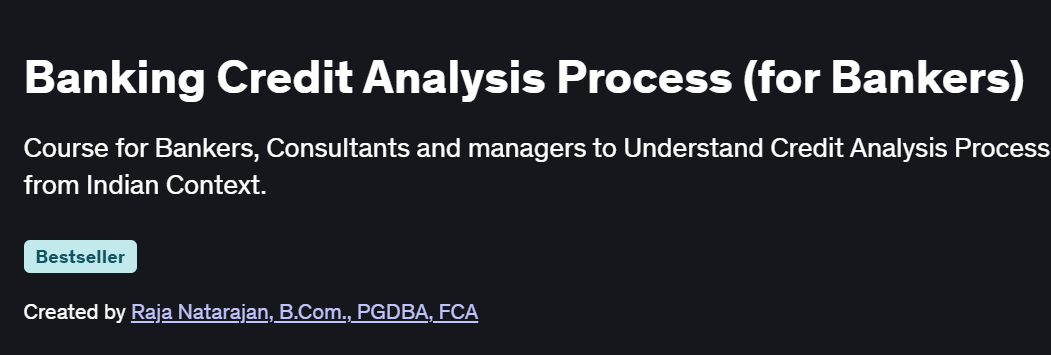What you will learn in Banking Credit Analysis Process Course
Learners will understand the fundamental concepts of credit analysis, including how to evaluate the financial health of individuals or businesses.
The course covers the key financial statements used in credit analysis, such as the income statement, balance sheet, and cash flow statement.
Students will explore how to calculate and interpret key financial ratios, including liquidity ratios, solvency ratios, and profitability ratios.
- The course teaches how to assess credit risk, make decisions regarding loans and credit, and develop effective credit policies.
- Learners will gain insights into the broader context of credit analysis, including macroeconomic factors, industry trends, and regulatory considerations.
Program Overview
Introduction to Credit Analysis
⏳ 2-4 weeks
- Understand the importance of credit analysis in financial decision-making and risk management.
- Learn the role of credit analysts and how they assess the creditworthiness of individuals or organizations.
- Study the basic principles of lending and the factors that influence the decision-making process.
Key Financial Statements for Credit Analysis
⏳ 4-6 weeks
Learn how to analyze key financial statements: the income statement, balance sheet, and cash flow statement.
Study how to assess the overall financial health of a business or individual based on these statements.
Explore the connections between financial statements and how they reflect creditworthiness.
Financial Ratios & Metrics
⏳ 4-6 weeks
Learn how to calculate and interpret financial ratios, such as current ratio, quick ratio, and debt-to-equity ratio.
Study how to use profitability, liquidity, and solvency ratios to evaluate a company’s ability to meet its financial obligations.
Understand how financial ratios help identify strengths and weaknesses in an entity’s financial position.
Assessing Credit Risk & Making Lending Decisions
⏳ 6-8 weeks
Learn how to assess credit risk by evaluating a company’s or individual’s credit history, financial performance, and future prospects.
Study the factors that influence lending decisions, including credit scores, collateral, and business outlook.
Understand how to balance risk and reward when making lending decisions and setting credit limits.
Macroeconomic & Industry Analysis
⏳4-6 weeks
- Learn how to evaluate the broader economic environment, including economic indicators, market conditions, and industry trends.
- Study how macroeconomic factors such as interest rates, inflation, and employment impact credit analysis and lending decisions.
- Understand the importance of assessing industry-specific risks and how to incorporate them into credit risk assessments.
Credit Policies & Regulatory Considerations
⏳ 4-6 weeks
Learn about the regulatory framework governing credit analysis, including guidelines, compliance standards, and risk management practices.
Study how to develop and implement credit policies that minimize risk and align with organizational goals.
Explore the role of credit analysts in managing regulatory compliance and preventing financial fraud.
Final Project: Credit Analysis Report
⏳6-8 weeks
- Apply the concepts learned throughout the course to analyze the creditworthiness of a real or hypothetical company.
- Develop a credit analysis report that includes financial ratio analysis, risk assessment, and lending recommendations.
- Present your report for feedback and refinement based on real-world credit analysis practices.
Get certificate
Job Outlook
- Credit analysts are in demand across industries such as banking, finance, insurance, and corporate sectors.
- Entry-level credit analyst roles typically offer salaries ranging from $55K to $75K, with experienced professionals earning $90K to $120K+.
- Credit analysts with expertise in risk management and lending decisions are valued for their ability to assess and mitigate financial risk for organizations.
Specification: Banking Credit Analysis Process (for Bankers)
|





